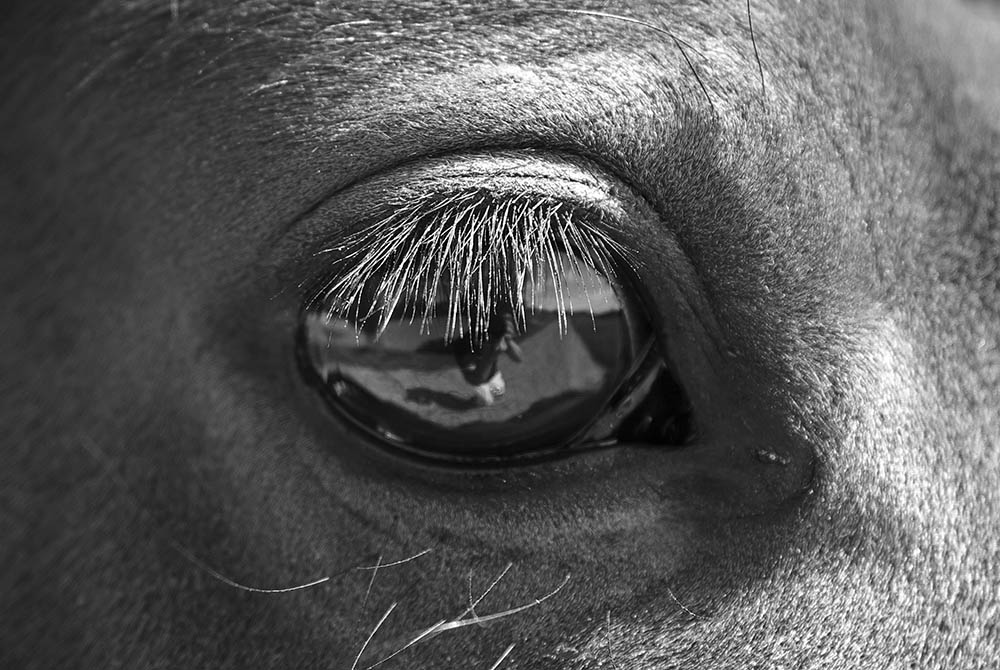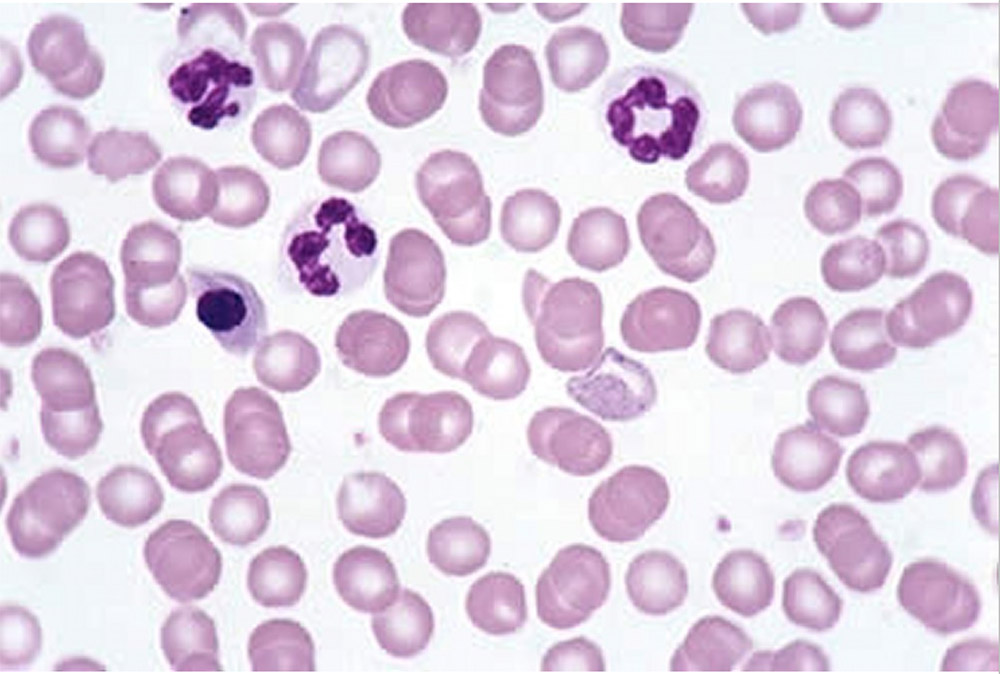The occurrence of acute heavy metal toxicity (HMT) is rare nowadays but did occur with a lot more frequency when the use of heavy metals was common. However, the slow, insidious accumulation of heavy metals may still occur and has the potential to negatively affect our horses.

“The presence of a heavy metal
can be identified using a hair sample.”
The easy accessibility to the internet and increased awareness of health and disease prevention has made most people aware of the risks associated with the ingestion of heavy metals, and as such, the use of many heavy metals for manufacturing products has been discontinued. But the presence of heavy metal residues in the environment cannot be totally ignored as a potential source of intoxication.
Recently, a new service has become available where the presence of a heavy metal can be identified using a hair sample (HTMA or Hair Tissue Mineral Analysis). Heavy metals can be deposited in a variety of organs, including hair, however, unlike other organs in the body, the hair is readily accessible for testing and once the metal is incorporated into the hair shaft, it remains there as a permanent record. Toxic elements can be more highly concentrated in hair than either blood or urine, making detection of small levels of heavy metals easier in hair than other more conventional tests. It is also a relatively inexpensive test to perform.
I thought it worthwhile to discuss some of the metals that can be identified as potential risks to a horse’s health if ingested or inhaled in large quantities, and/or over an extended period.
Most HMT cases present with similar signs due to the tissues that are targeted when ingestion occurs (intestines, liver and kidneys). This is not unexpected if you think about the role of these structures in the body: firstly, the intestines are the site of uptake and sometimes excretion of these toxins; secondly, the liver has a role in the body of trying to remove and detoxify compounds; and finally, the kidneys are responsible for filtering the blood and eliminating the waste. Heavy metals that gain access to the body via inhalation can often cause respiratory signs due to the irritation of the upper respiratory tract and pulmonary tissue in conjunction with the other organs. Sometimes the skin is the source of entry into the body and clinical symptoms reflect this by way of rashes, burns and ulcerations.
Some of the heavy metals that can cause toxicity in horses and be detected in hair samples include:
ALUMINIUM (Al) Can be acquired via ingestion or inhalation.
- Acute toxicity can cause profuse sweating, fever, increased respiratory rate, ataxia, seizures and muscle tremors.
- Eliminated primarily by kidneys but can also be excreted into faeces, bile, sweat, hairs, nails, milk, sebum and semen.
- Can affect calcium metabolism and cause phosphorus-metabolism imbalances.
- Diets deficient in calcium, magnesium, copper and zinc can increase Al absorption.
- If inhaled, can cause pulmonary (lung) fibrosis.
ANTIMONY (Sb) Entry to the body through ingestion or absorption.
- Toxicity has been associated with some medications including the use of antimony salts (an outdated treatment used by veterinarians).
- Often is accompanied by arsenic and can produce similar symptoms to arsenic toxicity.
- If inhaled, it is very irritating to the upper respiratory tract and can result in pulmonary oedema and respiratory distress.
- Long-term exposure can cause liver and kidney damage.
- Skin contact can cause ulceration.
- Can cause gastrointestinal irritation and therefore has been used medicinally as an emetic and purgative in other species.
- Can cause damage to the heart resulting in arrhythmias and cardiac arrest.
- Chronic symptoms include anorexia, fatigue, irritability, joint and muscular pain, coughing and blistering of the skin and gums.

“Environmental contamination is
one of the major sources of ingestion.”
ARSENIC (As) Arsenic has been used in small amounts as a remedy for several ailments in the horse over the years.
- Lethal when large amounts are ingested; the horse becomes violently ill and dies within days (thought to be the cause of Phar Lap’s death).
- Can cause sudden death without any preceding clinical signs if the dose is high enough.
- Nowadays, environmental contamination is one of the major sources of ingestion, although there were veterinary products available until recently that contained arsenic compounds or their derivatives.
- Environmental pollutants of arsenic can be found in soils and associated with old fence posts treated with arsenic-based products to protect the wood from pests.
- Affects the intestines, liver and kidneys, and can cause colic, profuse diarrhoea, anorexia, depression, and weakness.
- Can cause skin lesions including severe seborrhoea (scaley skin), ulcers, non-healing wounds and hair loss.
BERYLLIUM (Be) Used in the production of a variety of alloys.
- Toxicity can occur via inhalation, ingestion, or skin contact (based on human studies).
- Main route is via inhalation and in areas close to industrial sites where Be is used in production processes.
- If inhaled, causes a chemical pneumonitis in the lungs.
- Was very carcinogenic when inhaled experimentally in laboratory animals.
- Accumulates in the bones and remains in the body for exceedingly long periods.
- Interferes with the body’s ability to use magnesium, as it competes with this element, meaning it may take the place of magnesium in a chemical pathway and prevent the magnesium from being used.

“Mercury can cause acute renal failure
and damage the liver.”
CADMIUM (Cd) Although not a common metal, compounds containing cadmium can, like other metals, become environmental pollutants.
- It is used in the manufacturing of many products.
- The ingestion of contaminated forage is the most likely way a horse can become intoxicated with cadmium.
- Inhalation of cadmium-polluted dust from areas where industrial plants are situated can also cause toxicity, as the cadmium is absorbed through the lungs.
- Horses are unable to excrete Cd effectively from the body.
- Rather than an acute toxicity, this is more a slow accumulation and causes musculoskeletal (enlarged joints and reduced growth), liver and kidney damage.
- Cd interferes with some essential functioning elements in the body.
LEAD (Pb) Was the most frequently diagnosed HMT in veterinary medicine and has been diagnosed in all domestic species.
- Causes peripheral neuropathies (laryngeal hemiplegia), colic, depression, weight loss, anaemia, muscle weakness and immunosuppression.
- Accumulates in the liver, kidney and bone when ingested over a long period.
- Historically important when lead was used in many commercial and household products such as petrol, oil, paint, batteries, and roofing materials, and would make its way into streams and on to grassed areas.
- Horses can ingest Pb if they graze areas where the soil has been contaminated with the metal or drink water that has been contaminated.
- Fortunately, horses tend to be discriminating in their diet and do not usually lick old paint off walls or old batteries which other large animals (cattle in particular) may do.
- Foals and young horses are more susceptible to lead poisoning than adult horses.
- Death in horses can occur due to aspiration pneumonia secondary to laryngeal paralysis (food passes down the trachea into the lung tissue as the larynx is not working properly).

“Mercury can cause acute renal failure
and damage the liver.”
MERCURY (Hg) Was used as a skin blistering agent when the practice of blistering a tendon or a swelling was in vogue many, many, years ago, but fortunately, this type of treatment has almost become obsolete.
- Can occur when horses eat feed that has been contaminated or treated with certain fungicides.
- Mercury can cause acute renal failure and damage the liver.
- Clinically seen as gastroenteritis, lameness, weight loss and progressive hair loss.
- Chronic poisoning is rare but can cause degenerative injuries in the brain resulting in neurological signs.
SELENIUM (Se) Is an essential element in the horse’s diet and plays an important role as an antioxidant and is necessary for immune and reproductive functions.
- Se is acquired from many plants and pastures but seasonal variation in levels of Se occurs with the lowest levels available in spring and summer.
- Lush, legume-dominated pastures are more likely to be associated with low levels of Se intake.
- Se deficiency has been associated with “white muscle disease”, a fatal disease in foals.
- Se toxicity can occur from horses eating plants that are naturally high in selenium.
- Excessive amounts can cause the loss of mane and tail hair, cracking and sloughing of hooves, lameness and respiratory failure.
- Severe overdoses can cause death (usually the result of an inadvertent administration of the incorrect amount of selenium as a treatment).
- Se levels can also be measured using a sample of blood.
URANIUM (U) Horse-grazing areas in natural uriniferous sites are very unlikely to show toxicity signs.
- In areas of mining, uranium dust can be ingested or inhaled, causing signs of toxicity.
- Can reduce growth rates if non-fatal levels are ingested.
- Death occurs within days if large doses are ingested which would be extremely unlikely in non-experimental situations.
- Based on research in laboratory animals, can cause genetic, reproductive, neurological and carcinogenic effects.
- Radioactive contamination of the soil and water can occur around uranium mines and it also can accumulate in vegetation.
- Not well studied as to the direct effects this can have on horses, although in other animals it can produce behavioural effects such as depression, memory loss and changes in feeding and breeding behaviours. EQ

